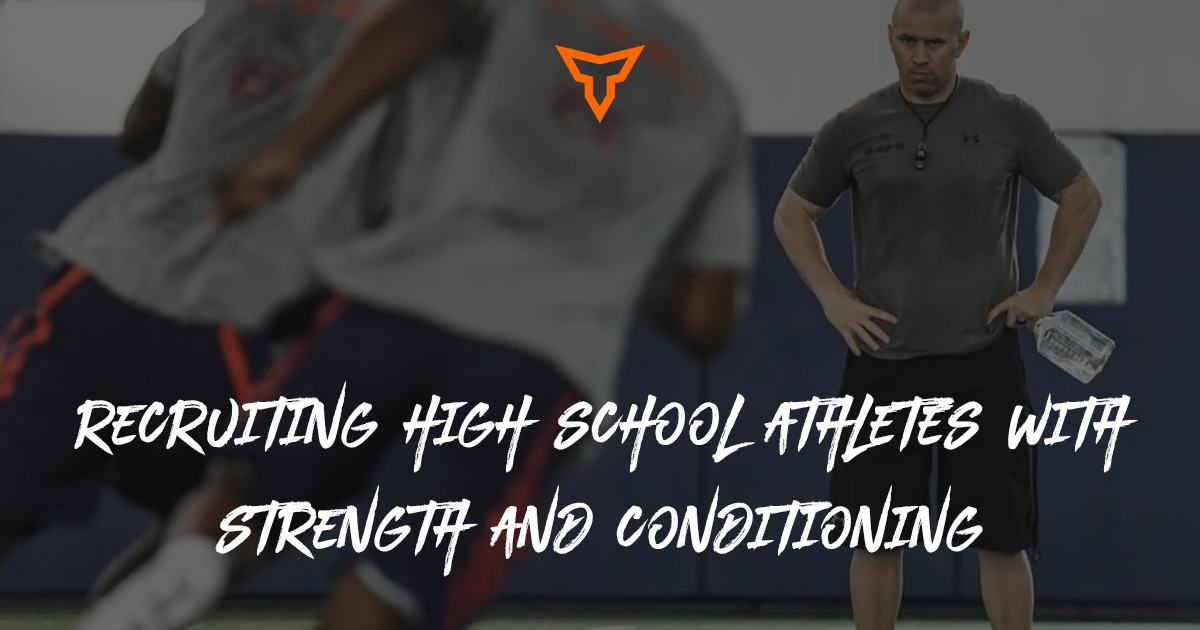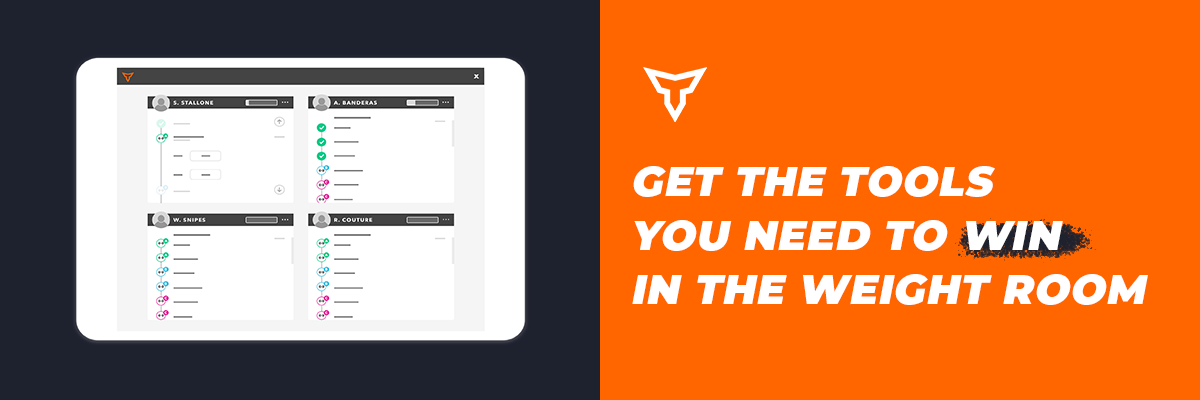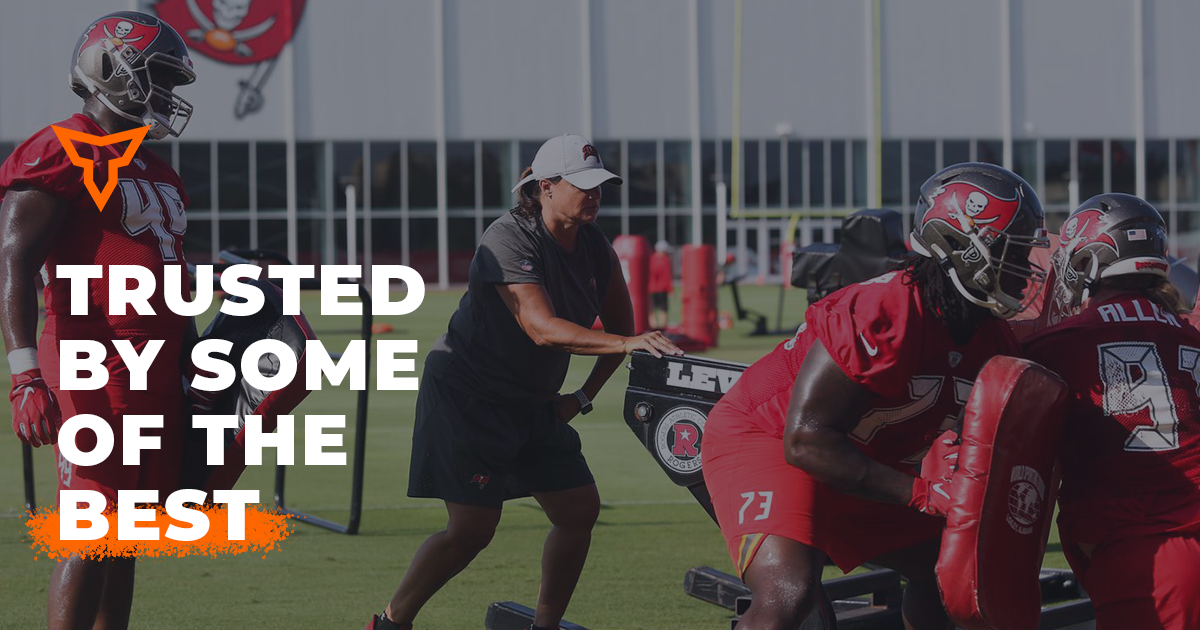Coach Led, Athlete Driven: How the Athletes' Environment Helps Winning
Throughout my coaching career I have altered my approach countless times when trying to determine the level of involvement I have with athletes in training. Often times I have over-coached, under-coached and generally failed to provide proper feedback in given situations. However, through trial and error and by developing a keener sense of each individual, I have grown in my ability to provide the necessary environment for the athletes in question.
While I am far from a finished product as a coach, I truly enjoy the social dynamic of working with athletes to establish the best possible training environment, and as such I have dedicated ample time to research and the accumulation of practical experience concerning this topic.
In light of the recent discussion in the coaching world on athlete autonomy, information processing, problem solving, mental health, stress and the role of coaches in both general and specific development, I decided now would be a good time to put some of my thoughts down on paper
First a few questions and thoughts:
What should our level of involvement as coaches be in a training or practice environment? After all the end goal is successful competition where coaching input is low.
How can we best prepare our athletes for competition and our humans for life? Those things are tightly intertwined but often separated.
Should everything be scripted and planned to the last yard? Some athletes crave structure. Others wilt under its rigidity.
Is self-exploration the best route for an athlete? Some might not have enough tools to cope with such an open-ended environment. Others could thrive on the novelty and ability to solve their own problems.
What are the problems or obstacles facing today’s athletes?
Are we equipped to empower them in the face of those issues?
Picture a group of twenty coaches who do not know each other eating at a table. We will assume they all care deeply about their craft and have studied it in depth. They all come from various sports and walks of life. They have different upbringings and beliefs. Some are strength coaches and others are sport coaches. Maybe even throw in a few psychologists or physical therapists. They will all have opinions on how to answer these questions as they view them through their respective lenses.
Undoubtedly, the meal would be lively and not without debate. I imagine the football coaches would order steaks while the hockey coaches grabbed some poutine. The soccer coaches are Irish so they would opt to pound beers. But I digress.
Some of the coaches would bristle at the mere thought of unstructured elements in a training program and tailor everything to the exact rep. Others would be much more likely to support a laissez-faire approach where athletes assume more control of their training. The array of ideas presented would really be quite something.
Now imagine there is a much less experienced coach present. He would be blown away by the passion, the number of opinions and the level of knowledge being bandied about. It would be quite overwhelming for him as he attempts to keep up with the conversation all while storing information and attempting to form his own opinion. He probably forgot to order food as he was so caught up in the dialogue.
The plethora of options before the young coach is certainly overwhelming. In such instances, we look for something that makes sense – something we can anchor ourselves to as a foundational belief. If we can just provide our brain with a solution to this web of information, all will be well.
Just like that young coach, an athlete is sure to feel the same emotions as he or she enters a new training environment. Perhaps it is a new sport, a new team, an introduction to strength and conditioning. If it is new, it will be overwhelming. This is where coaches and leaders must begin the process of empowerment so that the athlete can be given the tools to ultimately control his or her own fate.
Who are the key players in this process?
Environment/Atmosphere: This is something created between the training, the coach and the athlete. It must be to the athlete’s liking so he or she can thrive. It must also provide the necessary stimulus to drive adaptation that enhances performance. Establishing this environment requires trust, an ongoing conversation and an alignment of intentions.
Plan: This is all well and good, but without a plan of action that is perpetually discussed, there will not be good communication, intention or execution of tasks. A plan will also give the athlete an anchor and a sense of control, which helps them cope when there are setbacks.
Speaking of coping, there are four such methods detailed thoroughly by Robert Sapolsky who wrote the stress-related classic, Why Zebras Don’t get Ulcers. They are as follows:
- A perception of life improving: Environment and control.
- Social support: Coaches, teammates and family.
- Outlet for frustration: Training, competition, hobbies, recovery.
- A sense of predictability or control: Plan
Coping will in turn enhance learning and lead to more fruitful conversations and relationships all while expanding the autonomy of the athlete. An athlete with skin in the game will value his or her training that much more. That athlete will be more resilient in light of setbacks and will be a higher functioning human.
Before venturing farther down this path, be mindful that this is a very tricky subject as there is no surefire blueprint for how much coach intervention is needed to enhance an athlete’s abilities. Some athletes want constant feedback and instruction. Others don’t want to speak at all. Some know what is best for them and others haven’t a clue. This is what makes coaching so important. The role a coach plays is very fluid due to the evolving needs of a single athlete or the litany of needs from many. Only time and intentional practice will refine a coach’s ability to analyze the best course of action for a given scenario.
In addition, each coach will have his or her own style and inherent biases. This is crucial to providing a diverse range of experiences for athletes as they will typically be surrounded by a variety of coaches throughout their respective careers. However, coaches must also be mindful of such biases so they do not supersede the needs of the athletes.
A rigid, uncompromising coaching style is really the only wrong answer here. How we communicate our principles will change depending on our audience. A good coach knows when to intervene and when to let the athlete self-organize and be their own problem solver.
With this ambiguous information in mind (it ALWAYS depends), let’s dig into the good stuff.
Coaching is ultimately about preparing the athlete to perform at his or her best. And perform the best on his or her terms. That means as time goes on in training, there should be less coaching and more self-discovery/self-organization on the part of the athlete. If we do our job in the early stages to empower our athletes and educate them, the foundation will be set for them to expound upon it with their own personal touch. If our training is breeding a culture of robots with no ability to think for themselves in a dynamic environment, then we have made a mistake.[1]
Training cannot always be outcome focused. It must be exploratory and process based at times so the athlete can truly learn what works best to accomplish a specific task. This is something a coach will not often feel or see. It is the athlete’s journey. The coach is simply there to guide and listen. Mindful practice should not be overlooked.
This is important because the coach-led aspects of training eventually diminish. As we move towards the dynamic nature of competition, the elements of the early stages should be recalled by the athlete and used as an anchor or totem (subtle nod to the masterpiece Inception) to establish a sense of control in the chaotic environment of competition (more on this later).
The totems in Inception are really a brilliant plot device. Leo would spin a top and wait for it to fall over to reassure himself that he was not in an unstable dream world. He used it to recognize what environment he was in and that gave him clarity or peace of mind.
The mental and physical preparation of the early stages require effortful, intentional practice in a relatively stable environment. As the environment shifts away from general training to training for the sport, it loses predictability and stability until it is time to be exposed to the rigors of competition where most vestiges of coaching are removed. However, the initial training is still engrained. It's there to provide the athlete with options to solve problems in increasingly dynamic settings. It reassures them.
As previously stated, it is the coach’s responsibility to be aware of his or her respective situation and employ a flexible approach all while adhering to his or her principles. This will consistently drive a successful program so long as the athlete perceives the environment is a healthy one. And perception is everything.
Keep in mind athletes are facing increasingly higher stakes as their careers progress. The spotlight on sports shines brighter than ever and each decision made by an athlete is magnified all the more. High expectations, enormous pressure, poor performance, injuries and the daily stressors of life all combine to form a crescendo of stress. It would seem there are numerous obstacles to reaching the pinnacle of achievement. How can an athlete cope with all of that and succeed?[2]
Constructing a favorable environment is one of the most essential components to being a coach. Simply changing a song, greeting your athletes, doing a warmup outdoors[3] or fostering a community filled with social support – these are just a few instances where a coach can facilitate an improved sense of self in an athlete. Why not make all these psychological factors work for the athlete by being a well-intentioned, joy filled person?[4]
It is important to note that not every part of a training environment should be pleasant. The training must be demanding and spur growth. Some of it will be quite hard or tedious or frustrating. But if the athlete trusts the coaching, has been given proper motivation and has the right intent, then the environment is a good one. Treating someone with care doesn’t always mean with kid gloves. It’s much easier to eat your vegetables when you love and respect the person making you eat it and you understand the vegetables will help you.
Indeed, environment and atmosphere are crucial, but so is control. A study by Erik Gonzalez Mule shows higher mortality rates among people in high stress jobs where they possess very little control over their daily functions. However, people with high levels of control in similarly high stress jobs actually experienced a decrease in mortality rates.[5]
My takeaway from this study is that the body hates being in a constant state of threat. Chronic stress loops create dysfunction, poor recovery and eventually health concerns. If the human organism is not resilient enough to cope with said threats, bad things happen. The perpetual sympathetic response limits how the body can function in terms of digestion, movement, sleep, decision-making, recoverability, etc. In short, variability is lost and the human being in question suffers as a result.[6]
We can divide resilience into three components: variability, adaptability, and recoverability. These are the foundation upon which you will regain the ability to function and improve your resistance to the physical and psychological challenges of exercise and daily life.
How can we be resilient if we do not have the necessary physical or mental bandwidth (i.e. variability and recoverability) to respond to the stresses of life? Even without that, we may in fact adapt because that is what the body does in response to stress, but the adaptations will be compensatory – not ideal for health and performance.[7]
There is little doubt many of us are operating in high stress environments. Athletes in particular (especially at the collegiate and professional level) are constantly in a battle to establish control of their situation and ward off stress.[8]
Mule’s study shows this is an internal struggle for survival and many of us can empathize with the physical and mental toll such situations take. Cal Dietz said “Stress is a double-edged sword. It can build an athlete in to a dominating force or it can cut him down to an inferior shell of his former self.”[9] Managing it is a difficult task. How effectively athletes manage it is inherently dependent on the perception of their environment and what tools they possess to control it.
While stress is unavoidable, we can mitigate the deleterious effects with the proper environment and a plan to control it. Bill Hartman suggests practicing rituals (or outlets for frustration) as a means of establishing control. Daily habits include meditation, healthy nutrition practices, consistent wakeup times, training etc. The common theme here is that there is a plan rooted in science and enjoyed by the athlete.
When focusing on a plan particularly in training, we could go in countless directions. What is most imperative is that the plan is logically progressed towards a specific task and the athlete feels it is best suited towards managing stress and improving performance. We want them to have an initial sense of comfort. This builds trust, which leads to effective coaching, which results in empowered athletes who believe they are in control of their environment even when setbacks occur.
To accomplish such a scenario, coaches could start by rewriting the script on perceived threats. Possible threats include the weight room itself, a particular exercise, a teammate or perhaps even a coach. The athlete will come in with previous experiences and preconceived notions of strength and conditioning. It is on the coach to identify those and assist the athlete in coping with any negative stressors. Then it’s on to the nuts and bolts or sets and reps of the plan.
ALTIS coach, Stuart McMillian said “we know the most about a plan when we are deep in the process, not months before.” Every athlete is unique and requires his or her own program and environment. No matter how much expertise we acquire, each and every plan we devise should be questioned, examined and doubted. If we fail to do this, we are not appreciating the complexity of human beings and not learning. This is the worst thing a coach can do. And the athlete can smell it a mile away. Environment ruined, trust gone, performance shot. Game over.
If coaches disseminate dogma rather than view training as a puzzle to be solved, the joy of this field is missing. The process has to be living and breathing.[10]
We have discussed coping, control, planning and environment. These are the major pieces. But it is also important to be mindful of the chaotic nature of sport that we are preparing athletes for.
Training in the weight room occurs in a much “kinder” environment than sport. There are fewer threats and predictability is high. The general nature of S&C is different than the specifics of sport preparation. However, the former style of training allows an athlete to take a more mindful approach to knowing him or herself. It gives the athlete more movement options/physical literacy which in turns aids in the development of neural pathways. Breadth of physical ability will often be of great help to those who eventually seek depth in a particular physical realm. [11]
Think of the mental carryover here as athletes develop skills across a variety of platforms. This exposure to different stimuli breeds variability and adaptation – those tenets of resiliency. If dosed properly, this training can also combat the stressors of life and sport. Talk about a holistic mindset!
Yet there will come a time where threats are present and impossible to escape and athletes must be prepared for them. And as stated earlier, the general training is simply the totem. The specific training leaves them on more of an island while subsequently competition feeds them to the wolves.
In his book, Fergus Connolly references the concept of decentralized command in competition. On the field of battle or on the playing field, the preparation has already been done. Coaches and leaders are removed from their charges. It is on the latter to execute the gameplan and achieve a positive outcome. It’s quite evident that if none of the preparation involved self-led operations, then that team is at a disadvantage.[12] Good coaches create programs that prepare athletes for the demands of competition. They also create athletes who can perform those demands without them coaching.
One last quote, this from Connolly himself:
“The accumulation of this training-ground experience leads to faster and more informed decision-making, which not only increases the likelihood of achieving game plan aims but also reduces the mental and physical strain accumulated throughout the course of the game. If players know what to do and have done it many times before, they will be less anxious and stressed, so their body systems will be better able to focus on execution instead of managing negative emotions.”
Obviously, a large chunk of this is overseen by technical skill development, team practices and other factors, but S&C is the perfect way to transition from a closed, predictable environment to a more chaotic one. It slowly provides the athlete with responsibilities and self-guided tasks so that when the competition period begins, they are more equipped to succeed.
Hopefully this birds eye view of the value of self-exploration illustrates the need for savvy coaches who grasp the nuances of individuals, empower athletes to think for themselves and produce mentally and physically fit humans who can win both on and off the field. The road to competition is filled with opportunities, but if the coach does not lead properly, the players will be left with fewer options to take command of their fate when said opportunities arise.
So, make the training come alive and watch your charges reap the benefits on the field and in life.
[1] Myszka, S. Repetition Without Repetition: At the Heart of All Training Environments. https://www.just-fly-sports.com/repetition-without-repetition/?fbclid=IwAR19ZeBwMs01kgIY6S51f1mYyBSrw4e0yYHWHv4T4yY0YWXAE2kU3kYB5Bg, (pub. 01/21/2020). Accessed 01/24/2020.
[2] Nicholls A. & Levy, A. (2016) The road to London 2012: The lived stressor, emotion, and coping experiences of gymnasts preparing for and competing at the world championships, International Journal of Sport and Exercise Psychology, 14:3, 255-267, DOI: 10.1080/1612197X.2015.1020664
[3] Pearson, D. G., & Craig, T. (2014). The great outdoors? Exploring the mental health benefits of natural environments. Frontiers in psychology, 5, 1178. doi:10.3389/fpsyg.2014.01178
[4] Fletcher, D., Sarkar, M. (2012), A grounded theory of psychological resilience in Olympic champions. Psychology of Sport and Exercise, 13: 669-678. doi: https://doi.org/10.1016/j.psychsport.2012.04.007
[5] Gonzalez-Mulé, E. & Cockburn, B. (2017) Worked to Death: The Relationships of Job Demands and Job Control with Mortality. Personnel Psychology 70, 73-112, doi:10.1111/peps.12206
[6] Sapolsky, R. Why Zebras Don’t Get Ulcers. (St. Martin’s Griffin, 2004).
[7] Hartman, B. All Gain, No Pain: The Over-40 Man's Comeback Guide to Rebuild Your Body After Pain, Injury, or Physical Therapy. (Personal Record Press LLC., 2017)
[8] Fletcher, D., Hanton, S., Mellalieu, S.D. and Neil, R. (2012), A conceptual framework of organizational stressors in sport performers. Scandinavian Journal of Medicine & Science in Sports, 22: 545-557. doi:10.1111/j.1600-0838.2010.01242.x
[9] Dietz, C. Triphasic Training: A Systematic Approach to Elite Speed and Explosive Strength Performance. (Bye Dietz Sports Enterprise, 2012).
[10] Smith, J. The Living Set and Training Ideas from Masters of Coaching. https://www.just-fly-sports.com/the-living-set/, (pub. 12/08/2018). Accessed 01/22/2020.
[11] Epstein, D. Range: Why Generalists Triumph in a Specialized World. (Macmillan Publishers, 2019).
[12] Connolly, F. Game Changer: The Art of Sports Science. (Victory Belt Publishing, 2017).
Subscribe to our blog
Subscribe to receive the latest blog posts to your inbox every week.
Related posts

A Guide to Sandbag Training for High School and College Athletes

Compound Training for the Year-Round Athlete: A Strength Coach’s Guide


